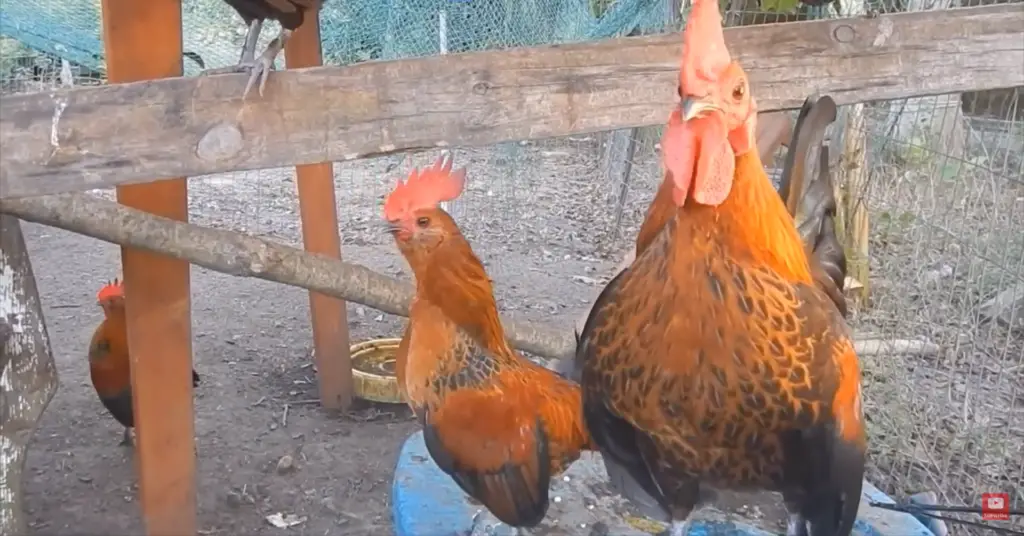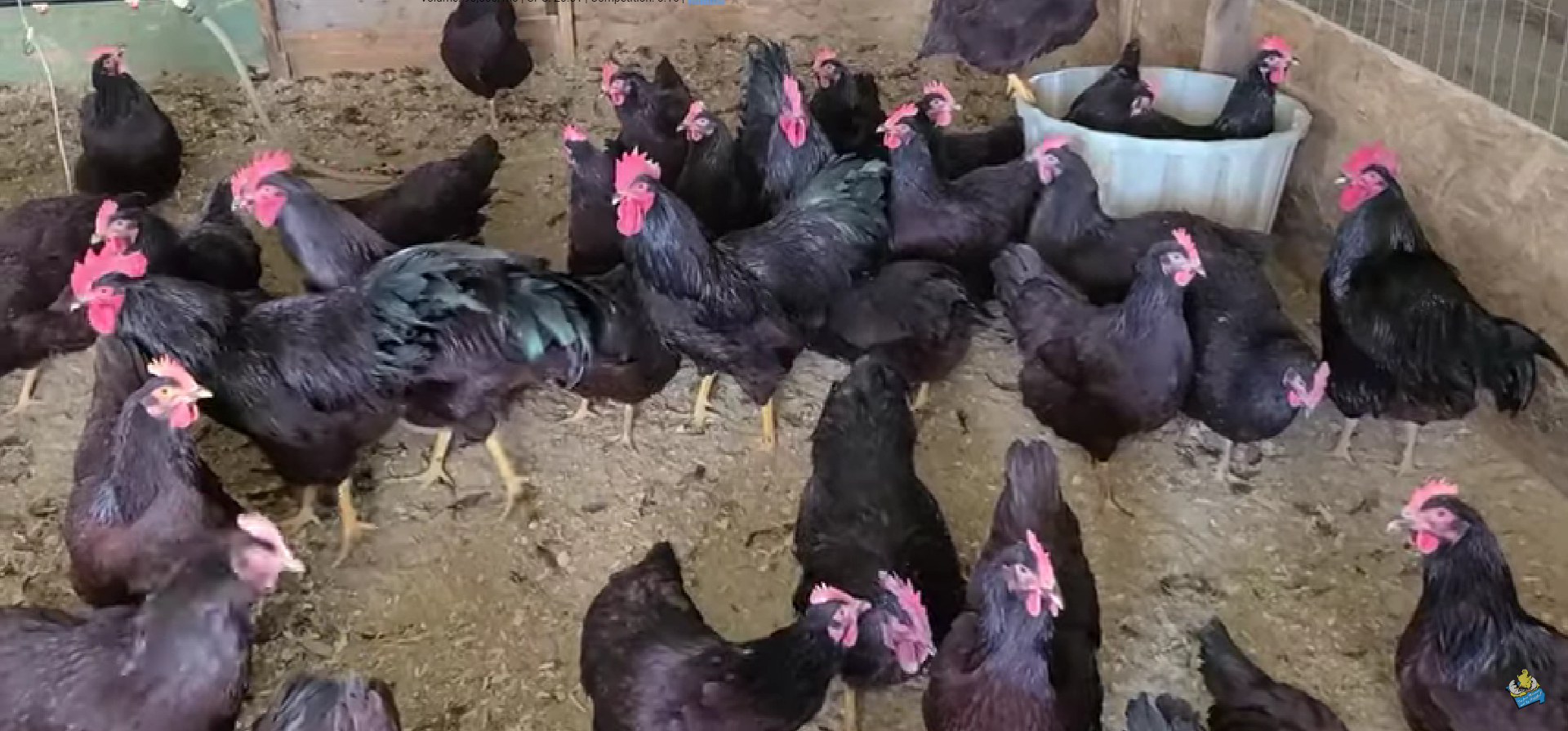Can Rhode Island Reds live longer free-range?
In terms of lifespan, Rhode Island Reds can live for several years with proper care. On average, they may live for around 5-8 years, but some individuals have been known to live for up to 10 years or more.
To help your Rhode Island Reds live a long and healthy life, it’s important to provide them with a clean and comfortable living space, a nutritious and varied diet, and regular access to fresh water. You should also keep an eye out for signs of illness or injury, and take your chickens to a veterinarian if needed.
As chickens age, they may slow down in their egg production and become more susceptible to health problems such as arthritis or egg-laying issues. However, with proper care and attention, you can help your Rhode Island Reds enjoy a long and happy life as part of your backyard flock.
What is a Rhode island red?

Some of our articles may contain affiliate links, which means I earn a small commission at no extra cost to you but it does help me with the running costs. As an amazon associate, I will earn commissions on purchases but this does not affect my reviews on products or services.
The Rhode Island Red is a popular breed of chicken that is highly valued for its meat and egg-laying abilities. Originating in the United States in the late 1800s, these chickens were developed for their hardiness and ability to thrive in a variety of climates. Today, they are one of the most popular breeds of chicken worldwide.
Rhode Island Reds are known for their attractive, rust-colored feathers and their upright, alert stance. They are medium-sized birds, weighing between 5 and 8 pounds, and are prized for their flavorful meat. Their meat is often described as firm and flavorful, with a relatively high-fat content that adds to the taste and texture.In addition to their meat, Rhode Island Reds are also highly valued for their egg-laying abilities. They are known to be very productive layers, capable of laying up to 300 large, brown eggs per year. Their eggs are highly nutritious, with a rich, creamy yolk and a firm, flavorful white.
Rhode Island Reds are hardy birds that are well-suited to a variety of environments. They are known to be good foragers, able to find food and sustenance even in less-than-ideal conditions. They are also relatively disease-resistant, making them a good choice for backyard chicken keepers or small-scale farmers.Overall, the Rhode Island Red is a versatile and highly-regarded breed of chicken that is prized for its meat and egg-laying abilities. Whether you are looking to raise chickens for meat, eggs, or simply as pets, the Rhode Island Red is an excellent choice that is sure to provide years of enjoyment and productivity.
Do Rhode island reds lay eggs all year round?
Rhode Island Reds are a popular breed of chicken known for their hardiness and good egg-laying abilities. They are highly regarded for their consistent production of large brown eggs, which are popular among backyard flock owners and commercial egg producers alike. But do Rhode Island Reds lay eggs all year round?
In general, Rhode Island Reds are considered to be good layers, and they can produce eggs consistently throughout the year. However, their egg-laying habits can be affected by a variety of factors, including age, daylight hours, temperature, and stress levels.
When Rhode Island Reds are young and in their prime laying years (around 6 months to 2 years of age), they can lay eggs nearly every day, assuming they are provided with adequate food, water, and shelter. As they get older, their egg production may start to slow down.
Another important factor that can impact egg-laying is daylight hours. Chickens are photosensitive creatures, meaning that like most chicken breeds their bodies respond to changes in daylight hours. In general, hens require at least 14-16 hours of daylight to lay eggs consistently. During the winter months, when daylight hours are shorter, many hens will naturally slow down or stop laying altogether. To encourage consistent egg production, some backyard flock owners use artificial lighting to supplement natural daylight and ensure that their hens have enough light to keep laying throughout the winter.

Temperature and stress levels can also impact egg production. During extreme heat or cold, hens may become stressed and reduce their egg output. Similarly, if they are exposed to loud noises, predators, or other stressful situations, they may stop laying or lay fewer eggs.
In summary, Rhode Island Reds are generally good egg layers that can produce eggs throughout the year, but their egg-laying habits can be affected by a variety of factors. By providing your chickens with proper care and attention, you can help ensure that they lay eggs consistently and enjoy a healthy and happy life.
What do Rhode island reds taste like?
Rhode Island Reds are a breed of chicken known for their hardiness, good egg-laying abilities, and tasty meat. While they are primarily raised for their eggs, Rhode Island Reds can also be used as a source of meat.
The flavor of Rhode Island Red meat can vary depending on a variety of factors, such as the age of the bird, how it was raised, and the cooking method used. In general, Rhode Island Red meat is lean and flavorful, with a slightly gamey taste that some people describe as richer and more robust than the taste of commercial chicken.
When prepared properly, Rhode Island Red meat can be delicious in a variety of dishes, such as chicken hot pot, roasted chicken, chicken soup, or chicken tacos. As with all types of meat, it’s important to handle and cook Rhode Island Red meat safely to avoid the risk of foodborne illness.
What is the most popular recipe for Rhode island reds?

Rhode Island Reds are a breed of chicken that are most commonly used for their eggs, rather than their meat. However, if you are looking for a recipe that features Rhode Island Red chicken, there are many delicious options to choose from.
One popular recipe for Rhode Island Red chicken is a classic roast chicken. To make this dish, you will need a whole Rhode Island Red chicken, olive oil, salt, pepper, and any other desired seasonings or herbs. Simply rub the chicken with olive oil, season it with salt and pepper, and roast it in the oven until it is cooked through and golden brown.
Another popular recipe is chicken soup or chicken stew. Using the bones and meat from a Rhode Island Red chicken can add a rich, savory flavor to the broth. Simply simmer the chicken in water with onions, carrots, and celery until the meat is tender and falling off the bone. Then, add your desired seasonings, vegetables, and noodles or rice to make a hearty and comforting soup or stew.
There are also many other ways to cook Rhode Island Red chicken, such as grilling, sautéing, or frying. The key is to use a cooking method that will highlight the natural flavor and tenderness of the meat.
Why did my Rhode island reds stop laying eggs?
There can be a number of reasons why your Rhode Island Reds have stopped laying eggs. Some of the most common reasons are discussed below:
- Age: Rhode Island Reds are known for their high egg-laying capacity, but this typically only lasts for the first 2-3 years of their lives. After that, their egg production may slow down or stop altogether.
- Light: Chickens need about 14-16 hours of light per day to lay eggs consistently. If your coop is not getting enough light, this can disrupt its egg-laying patterns.
- Nutrition: Chickens require a balanced diet to lay eggs, including adequate amounts of protein and calcium. If their feed is lacking in these nutrients, it can affect their egg-laying abilities.
- Stress: Chickens can become stressed by a number of factors, including overcrowding, predators, or sudden changes in their environment. Stress can cause them to stop laying eggs.
- Illness: If your chickens are sick, it can affect their egg production. Some common illnesses that can affect egg-laying include Marek’s disease, coccidiosis, and respiratory infections.
To determine why your Rhode Island Reds have stopped laying eggs, it’s important to observe their behavior and environment. Consider factors like age, lighting, nutrition, stress levels, and health. You may want to consult with a veterinarian or experienced chicken farmer to help you diagnose the issue and find solutions to get your chickens to lay eggs again.
Related posts:
- KOH Rong /MAD MONKEY/ Uncover Delicious /CAMBODIAN FOOD/

- Breaded chicken breast cooked in an oven (chicken milenese)

- Malaysian chicken curry with coconut cream


